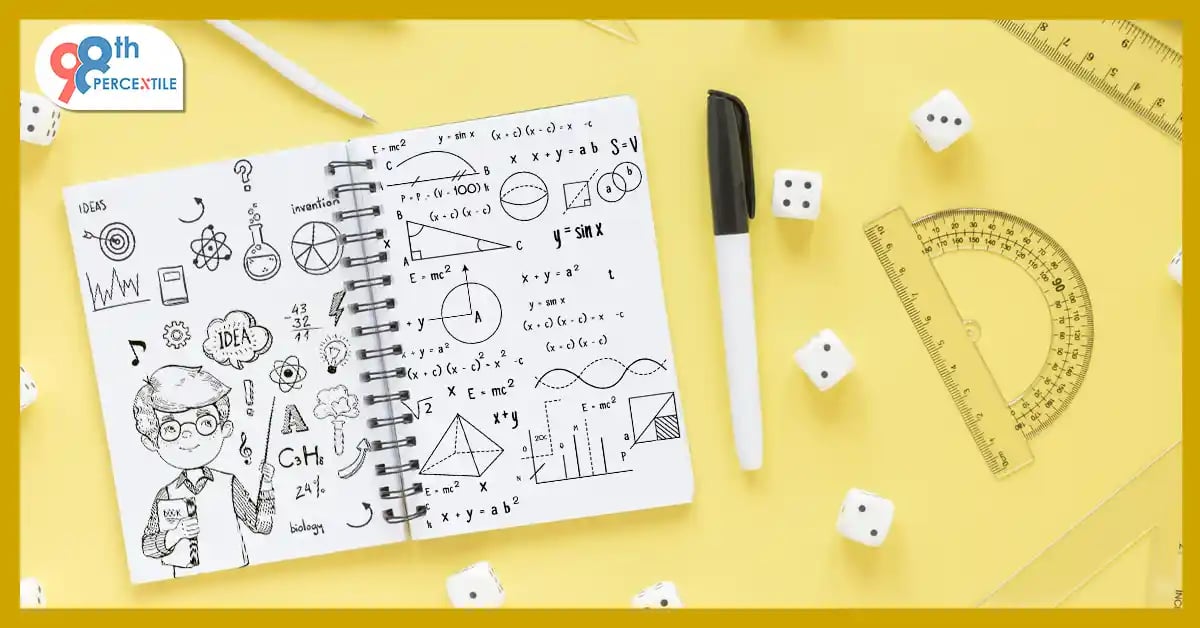The fundamental units of geometry are triangles, which have three sides and three angles that contain a variety of secrets just waiting to be discovered. The key to discovering these mysteries lies in the field of trigonometry, which is mathematics that deals with the relationships between triangles' angles and sides. We're going to take a trip into the realm of trigonometry in this blog, removing the layers to find the hidden gems inside triangles.
Understanding Triangles
Before delving into the complexities of trigonometry, let's first revisit the fundamental properties of triangles. Triangles are closed two-dimensional shapes comprising three sides and three angles. They come in various forms, including equilateral, isosceles, and scalene, each with its unique set of characteristics.
- Trigonometric Ratios: The ratios of a right triangle's sides are the subject of trigonometry. The sine, cosine, and tangent trigonometric ratios—often shortened to sin, cos, and tan, respectively—are the three main ratios. Here is how these ratios are defined:
Sin θ =
Cos θ =
Tan θ = - Pythagorean Theorem: The Pythagorean theorem is a fundamental concept in trigonometry that states that the square of the length of the hypotenuse, or side opposite the right angle, in a right triangle equals the sum of the squares of the lengths of the other two sides. Many trigonometric relationships are based on this theorem.
- Trigonometric Functions: The three reciprocal trigonometric functions are cosecant, secant, and cotangent, in addition to sine, cosine, and tangent. These can be defined as sine, cosine, and tangent reciprocals, in that order.
- Trigonometric Identities: Trigonometric identities are equations that hold true for any value of the variables inside of their respective domains. They are essential for solving trigonometric equations and aid in the simplification of expressions involving trigonometric functions.
- Solving triangles and trigonometric equations: Trigonometric equations involve trigonometric functions and can be solved in a number of ways, such as factoring, quadratic formula calculation, and trigonometric identities. With certain information, trigonometry also enables us to calculate the angles and side lengths of triangles.
Start Your Child's Math Journey Now!
Applications In Real Life:
- Architecture and Construction: Buildings, bridges, and other structures are designed and built by architects and engineers using trigonometry. Accurate calculation of angles, lengths, and dimensions ensures structural stability and correct alignment.
- Navigation: Whether traveling by land, sea, or air, trigonometry is a necessary skill. Trigonometric concepts are used by navigational tools like GPS units, sextants, and compasses to calculate distances, directions, and positions between points.
- Surveying and Cartography: Surveyors measure and map land areas, identify property boundaries, and produce precise topographic maps using trigonometry. In surveying projects, trigonometric techniques are useful for calculating elevations, angles, and distances.
- Physics and Engineering: The analysis of motion, oscillations, and waves is a common application of trigonometry in these fields. It facilitates comprehension of ideas like velocity, acceleration, frequency, and amplitude in mechanical and electrical systems.
- Mechanical Engineering: To design mechanisms, analyze forces, and optimize machine components, mechanical engineers use trigonometry. It aids in figuring out torque needs, stress distributions, and rotational angles in mechanical systems.
These are but a few illustrations of the various contexts in which trigonometry is used in everyday situations. It is an essential instrument in many scientific, engineering, and technological domains due to its adaptability and usefulness.
Unit Circle
A key idea in trigonometry is the unit circle. It is a circle with a radius of one that is positioned at the coordinate system's origin. The properties and computations of trigonometric functions of angles are made simpler by their definition in terms of coordinates on the unit circle.
All things considered, trigonometry is an important area of mathematics with a wide range of applications since it is critical to comprehending and evaluating the geometric and dynamic characteristics of triangles.
FAQs :(Frequently Asked Question)
Q.1: What is trigonometry?
Ans: Trigonometry is a branch of mathematics that deals with the study of triangles, particularly right triangles, and the relationships between their sides and angles.
Q.2: What are the basic trigonometric ratios?
Ans: The basic trigonometric ratios are sine (sin), cosine (cos), and tangent (tan), which represent the ratios of the sides of a right triangle. These ratios are defined as follows:
Sin θ =
Cos θ =
Tan θ =
Q.3: What is the Pythagorean theorem and how is it related to trigonometry?
Ans: According to the Pythagorean theorem, the square of the hypotenuse's length—the side that lies opposite the right angle—in a right triangle equals the sum of the squares of the lengths of the other two sides. This theorem is helpful in trigonometry as it establishes links between triangles' angles and sides.
Q.4: What are trigonometric identities?
Ans: Equations involving trigonometric functions that hold true for all values of the variables inside their domains are known as trigonometric identities. Equations using trigonometric functions can be solved and expressions made simpler with the use of these identities.
Q.5: In what ways do trigonometric functions aid in triangle solving?
Ans: Given specific triangle parameters, trigonometric functions can be used to solve triangles by calculating the angles and side lengths. The Pythagorean theorem, identities, and trigonometric ratios are applied in this process.
Q.6: In actual life, how is trigonometry applied?
Ans: Numerous disciplines, including architecture, engineering, navigation, physics, astronomy, art, and technology, use trigonometry. It can be used for a wide range of tasks, including building design, navigation, land surveying, motion analysis, computing celestial locations, producing visuals, and much more.
Book 2-Week Math Trial Classes Now!

 Students/Staff
Students/Staff Parents
Parents ElevatEd
ElevatEd




-Nov-18-2025-03-57-47-3267-AM.png?width=360&length=360&name=401x226%20(6)-Nov-18-2025-03-57-47-3267-AM.png)



-Jul-22-2025-03-16-52-8797-AM.png?width=360&length=360&name=401x226%20(6)-Jul-22-2025-03-16-52-8797-AM.png)






